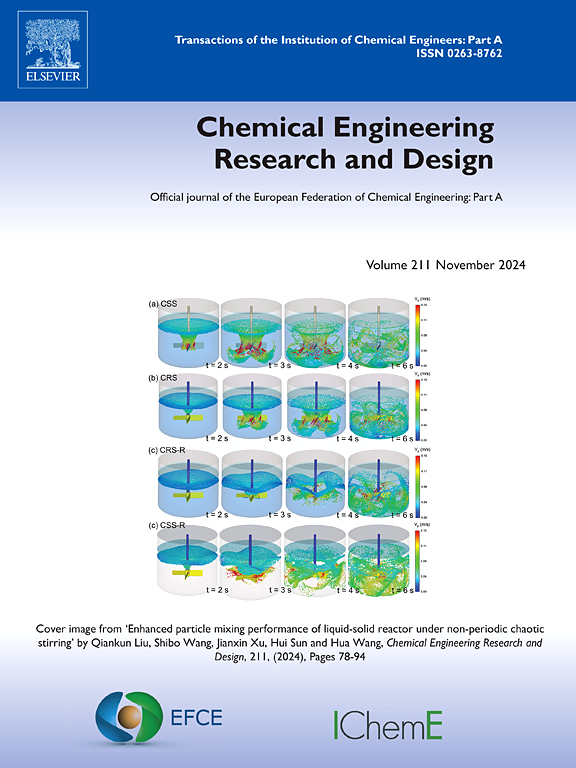Drift-flux parameters of heterogeneous bubbly flows in air–water cylindrical bubble column
IF 3.7
3区 工程技术
Q2 ENGINEERING, CHEMICAL
引用次数: 0
Abstract
An experimental database of the total gas holdup, , of heterogeneous bubbly flows in air–water bubble columns was constructed from the literature data (612 points). Ranges of the superficial gas velocity, , the initial liquid height, , and the column diameter, , were , and , respectively. The dependencies of the drift-flux model’s parameters, i.e., the distribution parameter, , and the drift velocity, , on were investigated based on the database and were introduced into the correlation. The present correlation in terms of the Froude number using as the characteristic length gives good evaluations for the database.

求助全文
约1分钟内获得全文
求助全文
来源期刊

Chemical Engineering Research & Design
工程技术-工程:化工
CiteScore
6.10
自引率
7.70%
发文量
623
审稿时长
42 days
期刊介绍:
ChERD aims to be the principal international journal for publication of high quality, original papers in chemical engineering.
Papers showing how research results can be used in chemical engineering design, and accounts of experimental or theoretical research work bringing new perspectives to established principles, highlighting unsolved problems or indicating directions for future research, are particularly welcome. Contributions that deal with new developments in plant or processes and that can be given quantitative expression are encouraged. The journal is especially interested in papers that extend the boundaries of traditional chemical engineering.
 求助内容:
求助内容: 应助结果提醒方式:
应助结果提醒方式:


